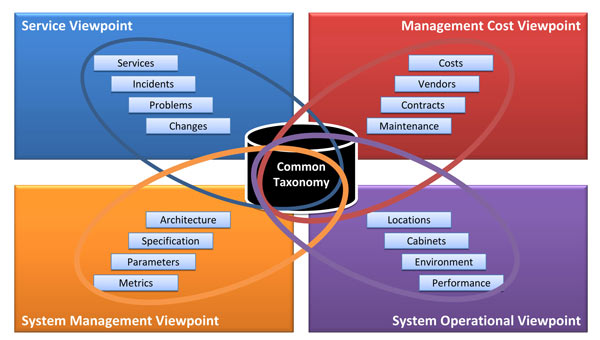
Figure 1 -- Covering all viewpoints.
Is it necessary to have a common language for communicating and reconciling critical business issues across a wide variety of stakeholders? Roger Evernden points out that "Within large corporations there is a huge diversity of locations, cultures, backgrounds, and specializations, each with its own terminology. Process, procedure, transaction, function, service, or activity might be labels that refer to the same thing, depending on whether you talk to a business analyst, policy maker, product manager, business manager, application architect, or process modeler. The same label may have different meanings. Or there may be overlaps between labels and meanings."
As a result, according to Evernden, "we need a way of getting a common understanding between different perspectives. Enterprise Architecture uses the notion of views and viewpoints (Figure 1 gives a pictorial overview of some example viewpoints), but these must be supplemented by the techniques described in this Update, because EA is essentially an information and knowledge management discipline. The intangible nature of an enterprise architecture means that we can only understand it through language."
We have two options:
- Adopt a formal language (i.e., use the same word for the same meaning). One advantage is that this can be used by IT to automate processing, or by computer scientists for reasoning and inference.
- Use less formal mechanisms to gain a common understanding. In EA, this means using ontology, patterns, mental models, and other artifacts.
Evernden concludes that "EA doesn't have a direct need for the formal language required in computer science, but it does need the common understanding that comes from ontology and the more prescribed forms of taxonomy and metamodel to provide architectural rigor."
* Excerpted from " Taxonomies and a Common Vocabulary: Why Does EA Need Them?," (![]() ) Business and Enterprise Architecture Executive Update, Vol. 17, No. 3
) Business and Enterprise Architecture Executive Update, Vol. 17, No. 3
Get stats and charts like these in your inbox, free!
The Cutter Edge is a free biweekly email service that gives you information and advice that you can put to work immediately for your organization. Issues are written by Cutter Consortium's journal and Senior Consultants.

